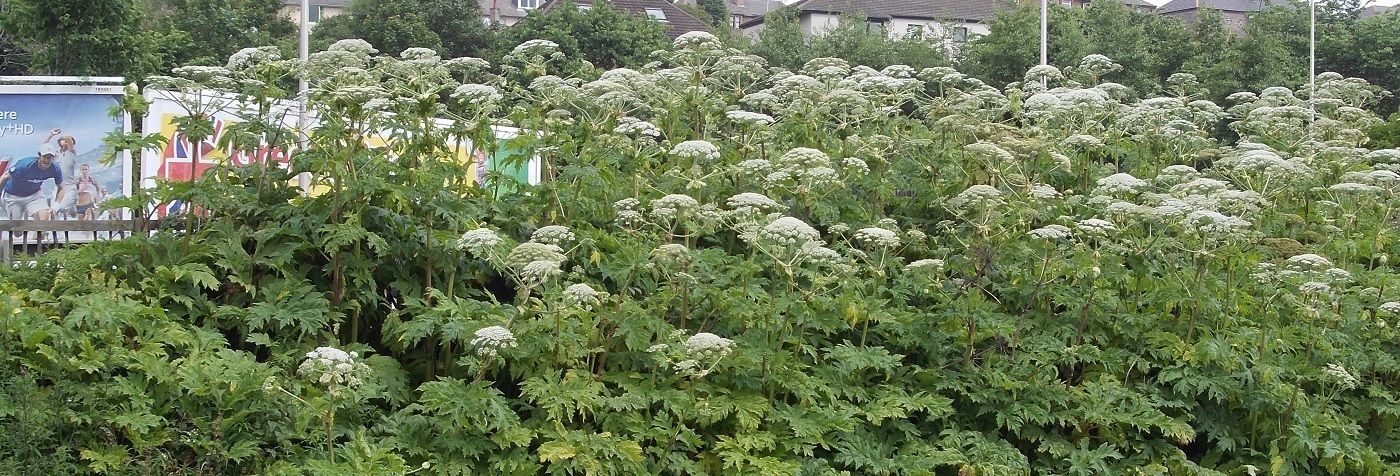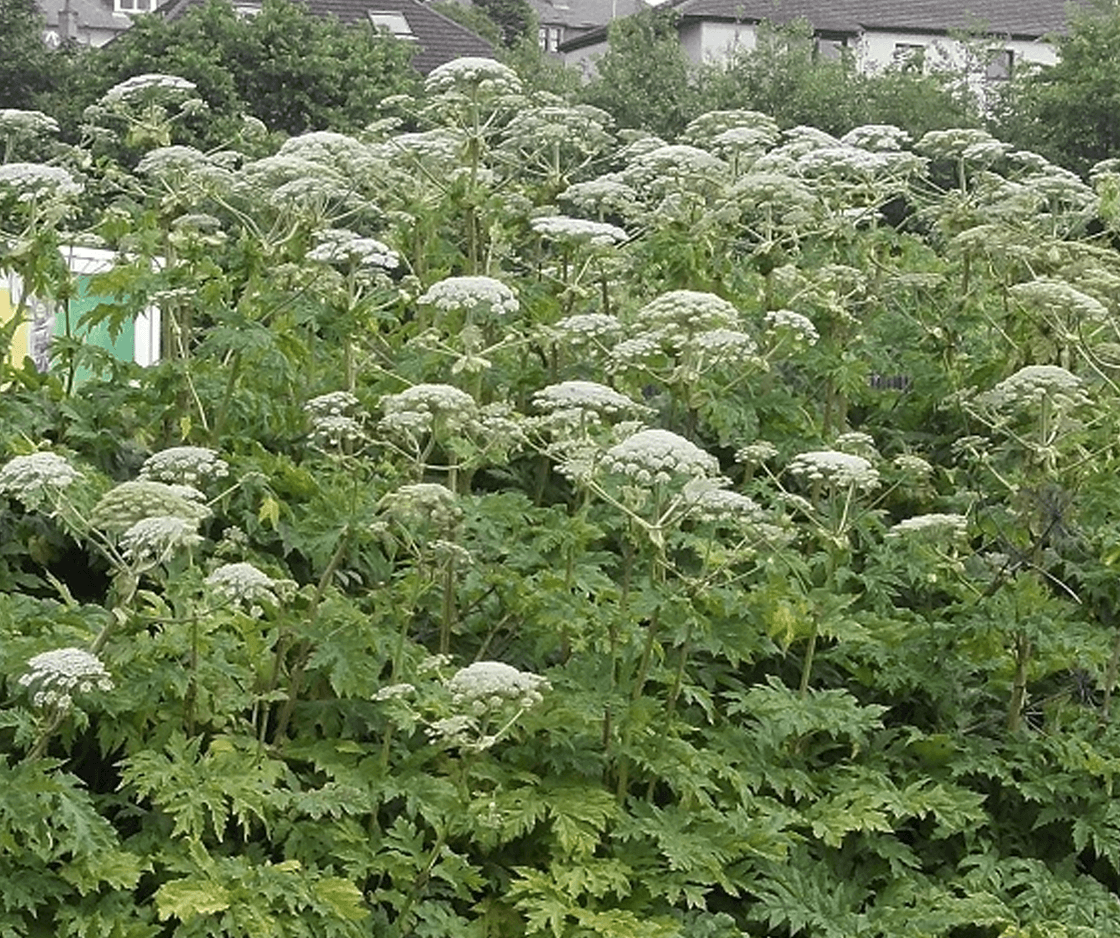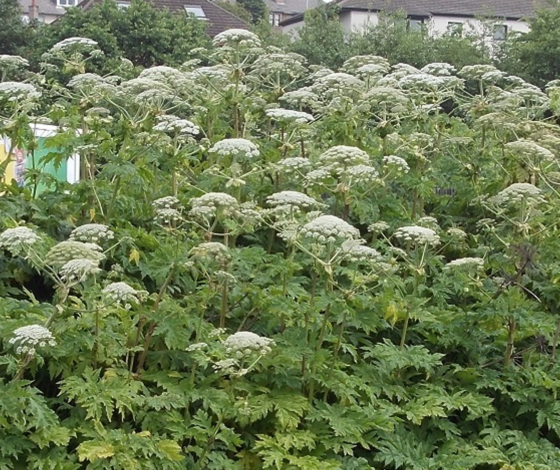
Giant Hogweed (Heracleum mantegazzianum) certainly fits the description as an invasive plant species. Giant Hogweed actually describes several closely related species of the Heracleum family but Heracleum mantegazzianum is the most common in the UK and they share many characteristics and present the same problems. The plant originates in the Caucasus region of south-west Asia and was introduced to the UK in the 19th century by the Victorians. At this time it was valued for its size and stunning appearance when flowering.
2022 EDITION
Visit our detailed Giant Hogweed Removal Guide
Answers to all of your questions about this pesky plant!
CHECK IT OUT
Characteristics of Giant Hogweed:
- The leaves are divided into three or five lobes and sharply pointed with a spiky appearance and fine hairs on the undersides of the leaves and on the stem.
- Giant Hogweed leaves will commonly grow to over 1m in width.
- The stem can grow up to 10cm in width, its hollow, green in colour with red spots and covered in hair like bristles.
- Stems also appear slightly ridged; this is particularly obvious on flower stems.
- The plant is perennial which means that it grows in summer and dies back every winter.
- It’s also monocarpic which means that it only flowers once in its lifetime and then dies.
- Germination takes place in early spring and you can expect to see shoots in March to early April.
- Mature plants flower from mid-June to late July and the flower heads are large and white to off-white colour and form an umbrella shaped head.
- Flowers will then become seeds which are dispersed between late August and October. Each plant can produce between 30 – 50,000 seeds.
- In winter the plants will die back to leave a rosette of dead grey leaves and stems with a central grey and woody stem.
The reasons to do something about Giant Hogweed are fairly simple, it represents a potentially very serious human health risk and you might be breaking the law by not controlling it. Sap is released from broken stems or bristles and released from leaf bristles on contact even if they remain unbroken in the same way as a stinging nettle. The sap contains substances called furocoumarins which make skin photosensitive this can result in a “burn” to your skin on contact and can blind you if it gets into your eyes. Symptoms have been known to persist for years after initial contact.
Giant Hogweed can be treated with:
- Herbicides – Applied either by a sprayer, stem injection or weed wiper;
- Physical destruction – It is possible to eradicate Giant Hogweed through physical destruction of the plant itself;
- On Site burial – Working in conjunction with herbicides or as a stand-alone option;
- Off-site disposal – Generally this is the quickest but most expensive option.
2021
Giant Hogweed removal
Accurately identifying an invasive weed without any prior knowledge can be tricky for the lesser green fingered amongst us, especially when there is a health risk involved. This free eBook will help educate, identify, treat and address the dangers of Giant Hogweed.
If you have any queries, need an experienced professional to identify a suspicious plant or you need some advice email to info@soilutions.co.uk or give us a call on 0131 538 8456. We’re always happy to have a chat.



